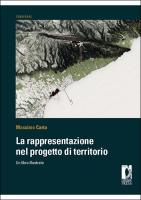La rappresentazione nel progetto di territorio
Un libro illustrato
| dc.contributor.author | Carta, Massimo | |
| dc.date.accessioned | 2022-05-31T10:18:40Z | |
| dc.date.available | 2022-05-31T10:18:40Z | |
| dc.date.issued | 2011 | |
| dc.identifier | ONIX_20220531_9788864532189_276 | |
| dc.identifier | OCN: 854619742 | |
| dc.identifier.issn | 2704-579X | |
| dc.identifier.uri | https://library.oapen.org/handle/20.500.12657/54992 | |
| dc.language | Italian | |
| dc.relation.ispartofseries | Territori | |
| dc.title | La rappresentazione nel progetto di territorio | |
| dc.title.alternative | Un libro illustrato | |
| dc.type | book | |
| oapen.abstract.otherlanguage | The leitmotif running through this book is a meditation on the various iconographic representations constructed in the course of research and during the drafting of planning instruments on various scales. There is special focus on the structure of drafting processes, a number of illustrative methodological syntheses and the attempt to adequately record the legends of the maps. The aim of all this is to restore the central role of the production of images in the experience recounted, and their importance within the project for the territory. To this extent, we can say that this book is an illustrated – through the products of research and the operational activities of what are frequently large and articulated groups – approach to the task of construction and organisation of the knowledge of local contexts, materialising in the attempt to delineate guidelines and scenarios for a sustainable future. Representations that are diversified in terms of method and of scale, of users and of aims, offer the cue for addressing issues that are central to the discipline, such as the need to render interpretations explicit and restore the quality of the contexts, the need to construct shared visions collectively, and from grassroots, the need to ensure that the graphic documentation can efficaciously perform differently modulated regulatory tasks. This is a process not necessarily oriented towards ameliorating the iconographic quality of the images, but rather towards consolidating and refining the languages, as well as achieving an enhanced awareness of the potential – and obviously also the limitations – of this type of disciplinary product. | |
| oapen.identifier.doi | 10.36253/978-88-6453-218-9 | |
| oapen.relation.isPublishedBy | bf65d21a-78e5-4ba2-983a-dbfa90962870 | |
| oapen.relation.isbn | 9788864532189 | |
| oapen.relation.isbn | 9788855189088 | |
| oapen.relation.isbn | 9788864532110 | |
| oapen.series.number | 8 | |
| oapen.pages | 226 | |
| oapen.place.publication | Firenze |

